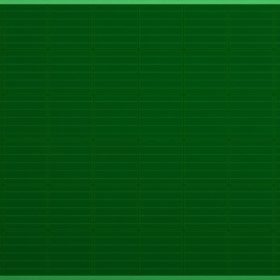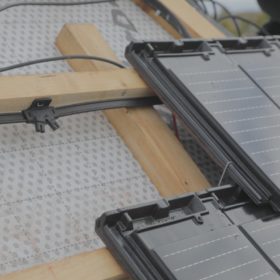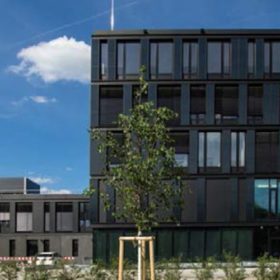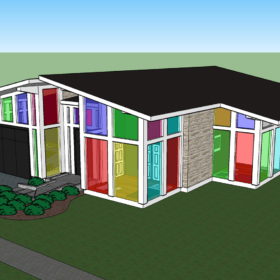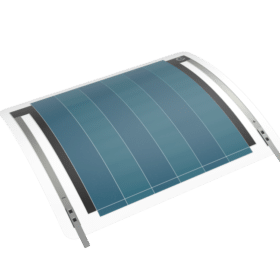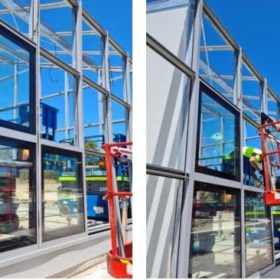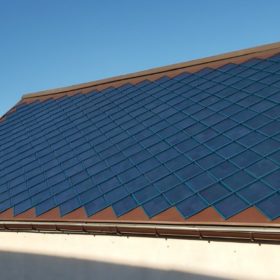Hevel Solar unveils 22.3%-efficient heterojunction BIPV module
The new panel has a nominal power of 395 W and a claimed temperature coefficient of 0.28% degrees Celsius.
Australia’s ‘largest’ solar facade
Victorian-based property developer Beulah has announced its soon-to-be-completed Paragon tower, in the heart of Melbourne, will be home to the nation’s largest and most efficient vertical solar PV system.
Solar tile made in Germany
German manufacturer Autarq is selling its solar tiles at a price ranging from €25 to €30 per piece. It claims a PV system built with these products can cover around 70% of household needs.
PV can cover almost half of typical office buildings’ electricity demand
Scientists in Germany have estimated that roof and facade PV systems can cover almost 40% of the total requirements of a standard office building, assuming that no battery storage is installed.
Solar window based on luminescent solar concentrators
U.S. scientists have put luminescent solar concentrators in a windowpane to absorb certain light wavelengths and transmit them to solar cells. The concentrators are made of a conjugated polymer sandwiched between window layers.
Mini organic solar module for indoor low-power applications
Under typical indoor illumination of around 500 lux, from light sources such as LED or fluorescent light, the device’s power conversion efficiency is just below 15%. The largest device has an open-circuit voltage of 3.8 V, a short-circuit current of 146 μA, and an output power of 418 μW. The product can also be used in conjunction with capacitors to replace batteries or to prolong their lifetime in low-power applications.
Large-size solar tile from Spain
The product is available both with monocrystalline and CIGS solar cells and is claimed to be the world’s largest solar tile with dimensions of 457 x 510 mm.
Transparent PV-based greenhouse takes shape in Australia
Western Australia-based solar glass developer ClearVue has commenced installation of its transparent solar PV glazing panels at what will be the world’s first clear solar glass greenhouse.
A 19.5% efficient solar tile with five-busbar technology
The tile has a power output of 45 W, an open circuit voltage of 5.63 V and a short-circuit current of 10.12. The product costs $1.38/W and has a 25-year performance guarantee
Fraunhofer ISE develops technique to produce glowing colored solar modules
The German research institute has proposed a technique based on the surface structure of the wings of the morpho butterfly to produce colored BIPV panels for facades and rooftops. The process is claimed to make it possible to color the modules with an optical effect and not with color pigments, which reduce their efficiency.
